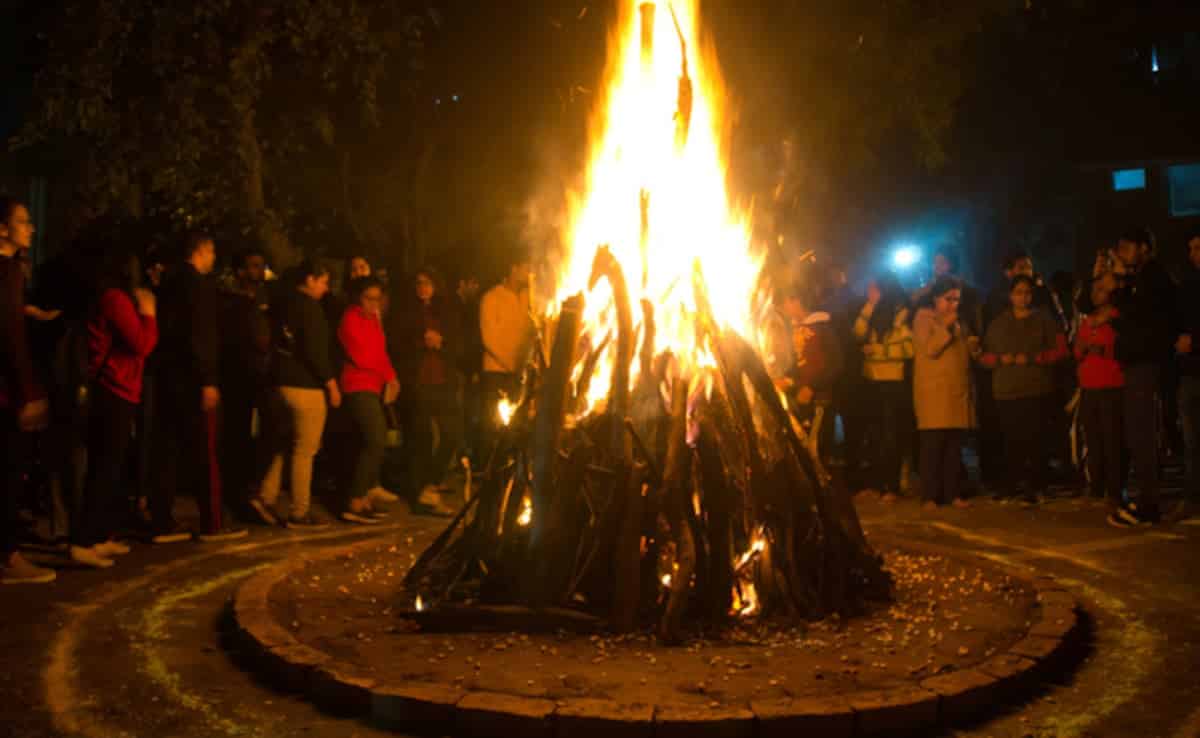A Vibrant Celebration of Harvest and Community

Lohri is a vibrant festival celebrated primarily in Punjab and neighboring states in northern India. This year, the festival falls on Monday, January 13. Lohri marks the end of the winter sowing season and the beginning of the harvest season. It is a time for families and friends to come together, celebrate, and express gratitude for the bountiful crops. The festival is characterized by the lighting of bonfires, singing traditional songs, and dancing. People throw peanuts, puffed rice, popcorn, and rewari into the flames, symbolizing their hopes and prayers for a prosperous year ahead.
Lohri is not just a Punjabi festival; it is embraced by many across India. The festival signifies the transition to longer, warmer days, occurring just before Makar Sankranti. It is a time to honor the Sun God, Surya Devta, and the Fire God, Agni, through prayers and offerings. The joyous atmosphere of Lohri brings communities together, fostering a sense of unity and celebration.
The Significance of Bonfires in Lohri
Bonfires are the heart of Lohri celebrations. On this day, people gather to light large bonfires in their yards or fields. The flames symbolize warmth and the promise of brighter days ahead. As the fire crackles, families and friends circle around it, tossing puffed rice, popcorn, and other treats into the flames. This act is not merely for enjoyment; it carries deep cultural significance.
According to Punjabi folklore, the flames of the Lohri bonfire carry the prayers and messages of the people to the Sun God. This ritual is believed to invoke warmth and support for the crops. For many, the bonfire represents the triumph of light over darkness, good over evil. It serves as a reminder that brighter days are on the horizon. The five essential offerings during Lohri include sesame seeds (til), gajak (sweets made of peanuts and jaggery), peanuts (moongphali), and popcorn (phuliya). These items are not only delicious but also hold symbolic meaning in the context of the festival.
Celebrating Lohri: Traditions and Activities
Lohri is a time for joy and gratitude. On this day, people engage in various activities that reflect the spirit of the festival. Special programs are organized where traditional Lohri songs are sung, and folk dances are performed. Men and women participate in lively dances such as jhoomer, bhangra, kikli, and giddha. These dances are not just forms of entertainment; they are expressions of cultural heritage and community bonding.
A unique tradition during Lohri is the preparation and sharing of “til rice.” This dish is made with jaggery, rice, and sesame seeds, symbolizing sweetness and prosperity. Families gather to enjoy this special meal, reinforcing their bonds and celebrating the harvest together. Additionally, kite flying is a popular activity on Lohri. The sky becomes a canvas of colorful kites, each carrying messages of joy and celebration. Kites like “Tukkal,” “Chhaj,” and “Pari” of various shapes and sizes fill the air, adding to the festive atmosphere.
The Community Spirit of Lohri
Lohri is more than just a festival; it is a celebration of community and togetherness. The festival brings people from different backgrounds together, fostering a sense of belonging. Neighbors and friends gather around bonfires, sharing stories, laughter, and food. This communal aspect of Lohri strengthens social ties and promotes harmony within the community.
The festival also serves as a reminder of the importance of agriculture and the hard work of farmers. As people celebrate the harvest, they acknowledge the efforts that go into cultivating the land. Lohri is a time to express gratitude for the abundance provided by nature. The festival encourages individuals to reflect on their connection to the land and the significance of sustainable practices.
Observer Voice is the one stop site for National, International news, Sports, Editor’s Choice, Art/culture contents, Quotes and much more. We also cover historical contents. Historical contents includes World History, Indian History, and what happened today. The website also covers Entertainment across the India and World.
Follow Us on Twitter, Instagram, Facebook, & LinkedIn

